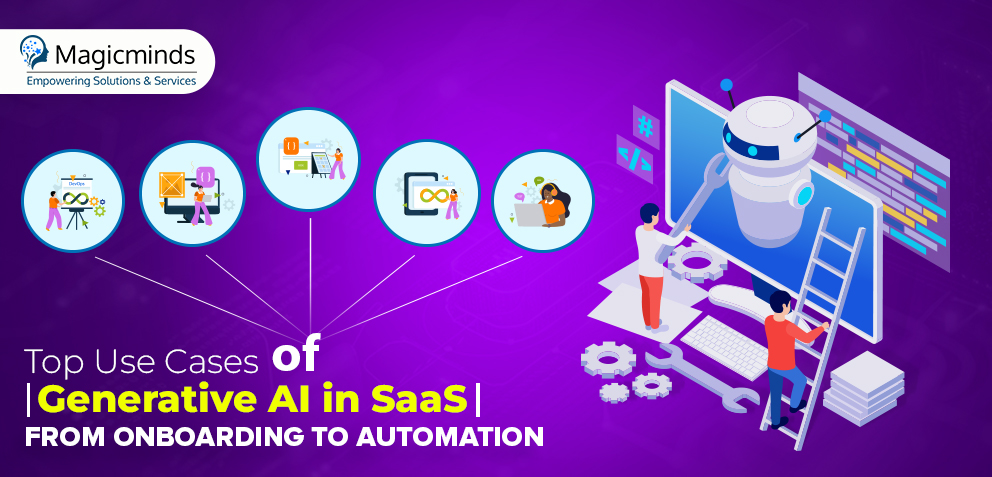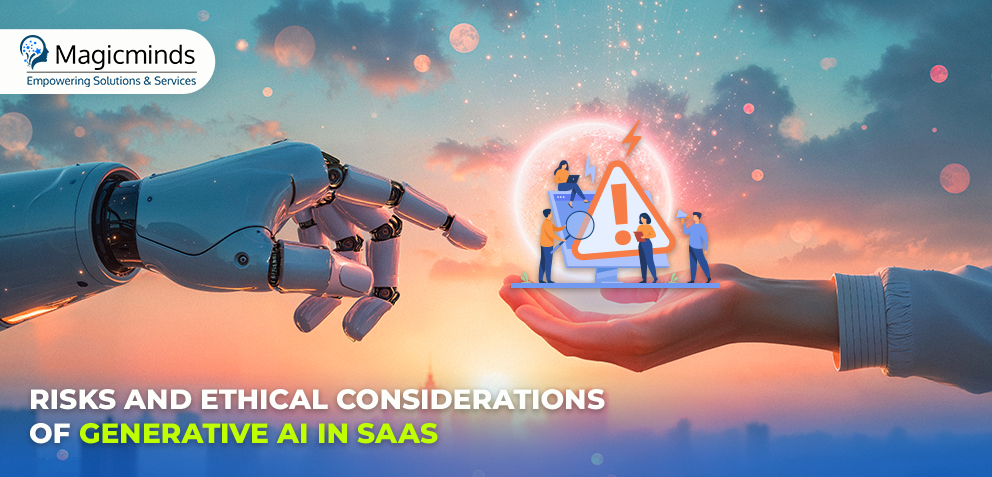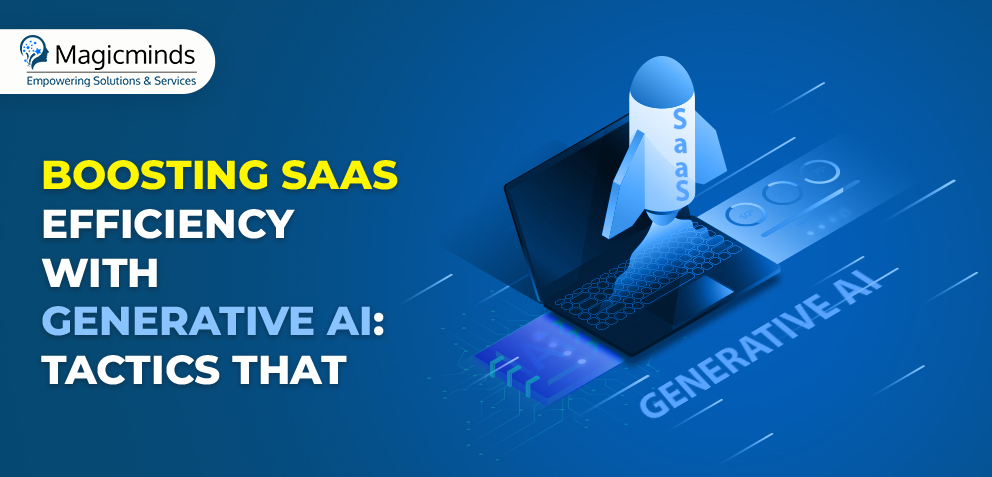Top Use Cases of Generative AI in SaaS: From Onboarding to Automation

 Stay In-the-loop
Stay In-the-loop
Get fresh tech & marketing insights delivered right to your inbox.
Share this Article
Tags
Category
- .Net Developer
- Adtech
- Android App Development
- API
- App Store
- Artificial Intelligence
- Blockchain Development
- Chatbot Development
- CMS Development
- Cybersecurity
- Data Security
- Dedicated Developers
- Digital Marketing
- Ecommerce Development
- Edtech
- Fintech
- Flutter app development
- Full Stack Development
- Healthcare Tech
- Hybrid App Development
- iOS App Development
- IT Project Management
- JavaScript development
- Laravel Development
- Magento Development
- MEAN Stack Developer
- MERN Stack Developer
- Mobile App
- Mobile App Development
- Nodejs Development
- Progressive Web Application
- python development
- QA and testing
- Quality Engineering
- React Native
- SaaS
- SEO
- Shopify Development
- Software Development
- Software Outsourcing
- Staff Augmentation
- UI/UX Development
- Web analytics tools
- Wordpress Development
Think personal onboarding experiences that feel tailor-made and even code that practically writes itself. Exciting as it may sound, these twists concerning generative AI swiftly shaking up the software as a service (SaaS) scenario hint at a transformative shift in how we handle everyday tech tasks, almost as if our traditional methods are quietly getting a creative upgrade.
It doesn’t just spin out text, images, or code—generally speaking, it brings along a boost in efficiency with a personal touch.
In this discussion, we dive into some prime use cases of generative AI in SaaS— how the same smooths everyday operations, enriches user experiences, and sparks fresh innovation, which is quite a game changer.
AI-Assisted Customer Onboarding
The initial impression of generative AI applications in a SaaS platform is crucial. When a platform employs AI to create a guide that feels tailored to your needs, it significantly transforms the user experience. Generative AI empowers SaaS platforms to create highly personalized onboarding experiences.
- Smart algorithms dig into user details and craft guides that feel personally tailored.
- Instead of one-size-fits-all lessons, you get interactive walkthroughs and on-the-spot help that matches your needs.
- AI even tweaks content based on your role or industry, making the whole intro process look surprisingly intuitive.
- Often, this customized start not only grabs attention fast but also helps cut down on early drop-offs.
Generating Personalized Email/Marketing Content
Connecting with the right people using the right message is simply vital. Here, AI excels by producing custom emails, social media updates, and ad copy on a large scale. It picks up on what the users like and how they act, and then it writes content that feels truly personal, occasionally. It’s almost as if it’s chatting with you one-on-one. In short,
- Personal touches can make a huge difference.
- Experimenting with different versions isn’t just smart—it genuinely boosts response rates.
Such behavior naturally ramps up engagement, brings in more clicks, and ends up forging better bonds with customers. Imagine for a moment an AI that’s juggling various email subject lines, each tweaked to grab attention differently across user groups.
Grow Faster and Unlock Your Potential with AI & ML Development Services
Transform your business with cutting-edge AI and ML solutions.
Chatbots and Customer Support AI
Customer support is the heart of any thriving SaaS operation. Users have always felt that customer support makes a real difference. Recently, AI chatbots have taken on the role of answering questions instantly, resolving issues, and providing real-time guidance to users. It may sound strange, but the topic concerns how these tools learn from giant troves of data, churning out responses that almost seem human.
These chatbots are not stuck on rehearsed replies like the old bots; instead, they pick up on the little nuances in a question and offer answers that fit. In most cases, it leaves human agents free to take on the trickier issues.
All in all, it feels like a win for both customers and teams, making support smoother and more personal.
Code Generation and QA Automation
Software development cycles can be significantly accelerated with generative AI. Generative AI helps developers by auto-generating code, suggesting smart algorithms, and even creating entire modules. It’s like having a coding man Friday!
AI also helps with testing by generating test cases, like QA automation, generating test cases, and spotting bugs. This means fewer errors, less rework, and quicker releases. SaaS companies can now rapidly implement new features and updates, enhancing their agility and competitiveness.
Knowledge Base Creation
Maintenance of a comprehensive and up-to-date knowledge base is required for user self-service. Here are some significant guidelines for creating a knowledge base:
- Generative AI automates the entire procedure for building a knowledge base. It can generate articles, FAQs, and documentation almost automatically, integrating information from various sources.
- In most cases, the output stays both clear and consistent, even though it’s gathered from a mishmash of sources.
- It nudges users to seek answers on their own, a move that generally lightens the load for support teams.
- This approach blends technical muscle with a down-to-earth touch, making everyday processes feel a bit more human and less robotic.
In Conclusion
Generative AI has revolutionized various aspects of SaaS companies, ranging from optimizing onboarding processes to reduce attrition to automatically producing attention-grabbing marketing copy. AI-powered chatbots now provide prompt, real-time assistance, enhancing customer satisfaction, while tools that generate code or conduct quality assurance tests expedite development and enhance software quality. It even steps in to set up huge, user-friendly knowledge bases, letting the users troubleshoot on their own.
Take Salesforce, for instance; they lean on their Einstein engine to mix in personalized sales tips and fresh recommendations. Jasper, a writing assistant, assists marketing teams by sourcing captivating content for diverse platforms. Most of these Generative AI examples in SaaS are eye-opening since they show that generative AI isn’t some far-off concept but a hands-on tool driving innovation and smoothing out operations in many top SaaS firms.
If you’re after SaaS options that aren’t skeptical about mixing in the latest technology, you might want to look at MagicMinds.
Think personal onboarding experiences that feel tailor-made and even code that practically writes itself. Exciting as it may sound, these twists concerning generative AI swiftly shaking up the software as a service (SaaS) scenario hint at a transformative shift in how we handle everyday tech tasks, almost as if our traditional methods are quietly getting a creative upgrade.
It doesn’t just spin out text, images, or code—generally speaking, it brings along a boost in efficiency with a personal touch.
In this discussion, we dive into some prime use cases of generative AI in SaaS— how the same smooths everyday operations, enriches user experiences, and sparks fresh innovation, which is quite a game changer.
AI-Assisted Customer Onboarding
The initial impression of generative AI applications in a SaaS platform is crucial. When a platform employs AI to create a guide that feels tailored to your needs, it significantly transforms the user experience. Generative AI empowers SaaS platforms to create highly personalized onboarding experiences.
- Smart algorithms dig into user details and craft guides that feel personally tailored.
- Instead of one-size-fits-all lessons, you get interactive walkthroughs and on-the-spot help that matches your needs.
- AI even tweaks content based on your role or industry, making the whole intro process look surprisingly intuitive.
- Often, this customized start not only grabs attention fast but also helps cut down on early drop-offs.
Generating Personalized Email/Marketing Content
Connecting with the right people using the right message is simply vital. Here, AI excels by producing custom emails, social media updates, and ad copy on a large scale. It picks up on what the users like and how they act, and then it writes content that feels truly personal, occasionally. It’s almost as if it’s chatting with you one-on-one. In short,
- Personal touches can make a huge difference.
- Experimenting with different versions isn’t just smart—it genuinely boosts response rates.
Such behavior naturally ramps up engagement, brings in more clicks, and ends up forging better bonds with customers. Imagine for a moment an AI that’s juggling various email subject lines, each tweaked to grab attention differently across user groups.
Chatbots and Customer Support AI
Customer support is the heart of any thriving SaaS operation. Users have always felt that customer support makes a real difference. Recently, AI chatbots have taken on the role of answering questions instantly, resolving issues, and providing real-time guidance to users. It may sound strange, but the topic concerns how these tools learn from giant troves of data, churning out responses that almost seem human.
These chatbots are not stuck on rehearsed replies like the old bots; instead, they pick up on the little nuances in a question and offer answers that fit. In most cases, it leaves human agents free to take on the trickier issues.
All in all, it feels like a win for both customers and teams, making support smoother and more personal.
Code Generation and QA Automation
Software development cycles can be significantly accelerated with generative AI. Generative AI helps developers by auto-generating code, suggesting smart algorithms, and even creating entire modules. It’s like having a coding man Friday!
AI also helps with testing by generating test cases, like QA automation, generating test cases, and spotting bugs. This means fewer errors, less rework, and quicker releases. SaaS companies can now rapidly implement new features and updates, enhancing their agility and competitiveness.
Knowledge Base Creation
Maintenance of a comprehensive and up-to-date knowledge base is required for user self-service. Here are some significant guidelines for creating a knowledge base:
- Generative AI automates the entire procedure for building a knowledge base. It can generate articles, FAQs, and documentation almost automatically, integrating information from various sources.
- In most cases, the output stays both clear and consistent, even though it’s gathered from a mishmash of sources.
- It nudges users to seek answers on their own, a move that generally lightens the load for support teams.
- This approach blends technical muscle with a down-to-earth touch, making everyday processes feel a bit more human and less robotic.
In Conclusion
Generative AI has revolutionized various aspects of SaaS companies, ranging from optimizing onboarding processes to reduce attrition to automatically producing attention-grabbing marketing copy. AI-powered chatbots now provide prompt, real-time assistance, enhancing customer satisfaction, while tools that generate code or conduct quality assurance tests expedite development and enhance software quality. It even steps in to set up huge, user-friendly knowledge bases, letting the users troubleshoot on their own.
Take Salesforce, for instance; they lean on their Einstein engine to mix in personalized sales tips and fresh recommendations. Jasper, a writing assistant, assists marketing teams by sourcing captivating content for diverse platforms. Most of these Generative AI examples in SaaS are eye-opening since they show that generative AI isn’t some far-off concept but a hands-on tool driving innovation and smoothing out operations in many top SaaS firms.
If you’re after SaaS options that aren’t skeptical about mixing in the latest technology, you might want to look at MagicMinds.


